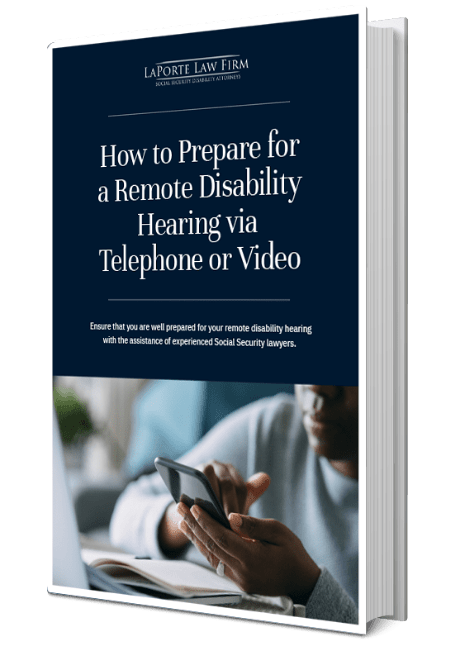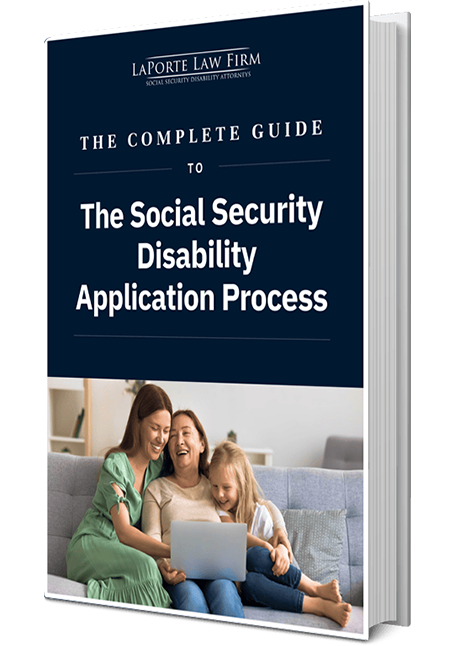
Can You Collect Long-Term Disability and Social Security at the Same Time?
Yes, you can collect both Long-Term Disability (LTD) benefits and Social Security Disability Insurance (SSDI) benefits simultaneously, but your LTD benefits may be reduced by the amount you receive from SSDI. This is because many LTD insurance policies have an “offset” provision that reduces your LTD payments by the amount of SSDI benefits you receive.
In many instances, you may be eligible for LTD disability benefits and SSDI benefits. Many LTD carriers require that you apply for SSDI benefits.
If you are awarded both SSDI benefits and LTD benefits, the SSA will not reduce your SSDI benefits. But in some cases, the LTD benefit may be reduced by the amount you receive from SSDI. This offset policy prevents beneficiaries from receiving more than a certain percentage of their pre-disability income. You should review the specifics of your LTD policy to determine if an offset will occur.
What Is Long-Term Disability Insurance?
Understanding Social Security Disability Insurance (SSDI)
Social Security Disability Insurance is a federal benefit that provides monthly benefits for people who are permanently disabled. The insurance program is managed by the Social Security Administration (SSA) and funded by Social Security taxes. To qualify for SSDI benefits, your disability must preclude you from performing your past work or transferring your skills to any other full-time work. Your disability must be permanent. This means that your impairment can be expected to result in death or can be expected to last for a continuous period of not less than 12 months.
The Interaction Between Long-Term Disability and SSDI Benefits
Long-term disability and SSDI benefits both provide monetary benefits to disabled individuals who are unable to work. But there are also some key differences to be aware of.
Eligibility differences
The rules and definitions of permanent disability and long-term disability are different. To be eligible for SSDI benefits, you must have worked and paid into Social Security. To be found disabled by the SSA, you must show that your disability will or is expected to last at least 12 months and precludes your ability to work full time.
On the other hand, to be eligible for long-term disability, you must have a private insurance plan. Each insurance program may have a different definition of a long-term disability. Most policies have two definitions of disability: “own occupation” and “any occupation.” During the own occupation period, LTD benefits are payable if the person is unable to perform his or her regular job. During the any occupation period, LTD benefits are payable if the person is unable to perform any occupation for which they are qualified by education, training, or experience.
Benefit calculation
Long-term disability and SSDI benefits are calculated based on your prior earnings. But the benefit amounts will vary. LTD benefits usually provide wage replacement that is between 50% and 70% of your prior earnings before your disability impacted your ability to work.
Meanwhile, SSDI benefits are calculated based on your average earnings before you became disabled. The SSA will determine how much you’ve earned and how much Social Security tax you paid while you were working. They will then calculate your primary insurance amount. You can find your benefit amount by creating an account online here.
Concurrent receipt of benefits
Many people are eligible for and receive both LTD and SSDI benefits. In many cases, LTD carriers require that recipients apply for SSDI benefits. It’s important to note that many LTD insurance policies reduce the LTD benefit by the amount received from SSDI.
Tax implications
SSDI benefits and LTD benefits may be taxable. SSDI benefits are only taxable if your household income is high enough to owe taxes. LTD benefits are also taxable. Whether or not they are taxable is based on who paid the premiums for the coverage and whether the premium payments were paid pre-tax or post-tax.
Duration of benefits
SSDI benefits will continue as long as you remain unable to work due to your disability. SSDI benefits only end once the recipient hits full retirement age. Once you reach full retirement age, the SSA will pay SSA retirement benefits rather than the SSDI benefit.
LTD benefit duration will depend on the insurance policy. LTD benefits continue as long as you are deemed disabled or until the policy’s maximum benefit period is reached.
Medical review
Both LTD and SSDI require regular reviews of the recipient’s medical condition to determine ongoing eligibility. When SSA determines that you are disabled, they may determine whether they believe your disability will improve. They may also determine how often your case should be reviewed. Reviews may occur every one to seven years.
Tips on How to Successfully Apply for Both Benefits
Follow these tips to boost your chances of being approved for both LTD and SSDI benefits:
Know the eligibility requirements
Both LTD and SSDI benefits involve a disability that precludes your ability to work. However, the definitions of disability and the eligibility criteria for both benefit programs vary. Before you apply for benefits, research the eligibility criteria for both benefit programs. Make sure you meet all the requirements before applying. If you think you qualify for either or both benefits, you should consult an attorney.
Gather the necessary documents
Once you assess the eligibility requirements for each program, you must collect all necessary documents for the application. This may include identification, employment history, past education information, and medical documentation.
To qualify for both SSDI benefits and LTD benefits, it is important to have medical documentation that demonstrates your disability. The SSA and LTD carriers will review the medical evidence to determine if you have a disability that precludes work. Before you apply for benefits, you’ll want to gather your medical treatment information to prove your disability.
Fill out application forms accurately
Take your time in filling out the application forms. Any mistakes can lead to delays or even a denial of your disability application.
Follow up regularly
After submitting your application, you should regularly follow up on its status. If there are any issues or more information is needed, you should work to address them promptly. To check the status of your SSDI application, you can create an account and track the case here.
Appeal if necessary
LTD and SSDI claims may be denied for any number of reasons. Insurance companies and SSA deny applications in over half of claims. Many times, it takes subsequent appeals before a case is ultimately successful. If your claim is denied, don’t get disheartened; instead, find out the reason for the denial and file a timely appeal.
Seek professional help if needed
If the application or appeals process seems overwhelming, don’t hesitate to seek help from an attorney. An attorney can guide you through the process and ensure everything is done correctly.
FAQs
SSDI benefits can be offset by other public disability benefits you receive. If the total amount of your SSDI benefit and other public disability benefits exceeds 80% of your average current earnings, your SSDI benefit will be reduced. SSDI benefits will not be offset by any private benefit, including LTD.
LTD benefits may be offset by the amount you receive for SSDI. If you are approved for SSDI and LTD, you should review your LTD policy to be aware of how SSDI works within your specific plan.
The maximum SSDI benefit amount is $3,822 per month. The average SSDI benefit is about $1,537.
When determining disability for SSDI, the Social Security Administration will look at any condition that affects your ability to work. If the combination of any physical or mental impairment precludes your ability to perform your past work or any other full-time work, you will be eligible for SSDI benefits.
With determining disability for LTD, the insurance carrier will determine if you have any disability that prevents you from performing the duties of your own occupation or any occupation for which you are reasonably fit by education, training, and experience. However, many LTD policies have a pre-existing exclusory period that excludes coverage for a certain time if the individual has a prior medical condition.
If you are awarded SSDI benefits, the SSA will pay benefits in the sixth full month after the date your disability began. This is called the five-month waiting period. LTD policies also contain waiting periods. Once you apply for LTD benefits, there is usually a waiting period before you can begin to receive benefits. This waiting period can last anywhere from 30 to 180 days.














